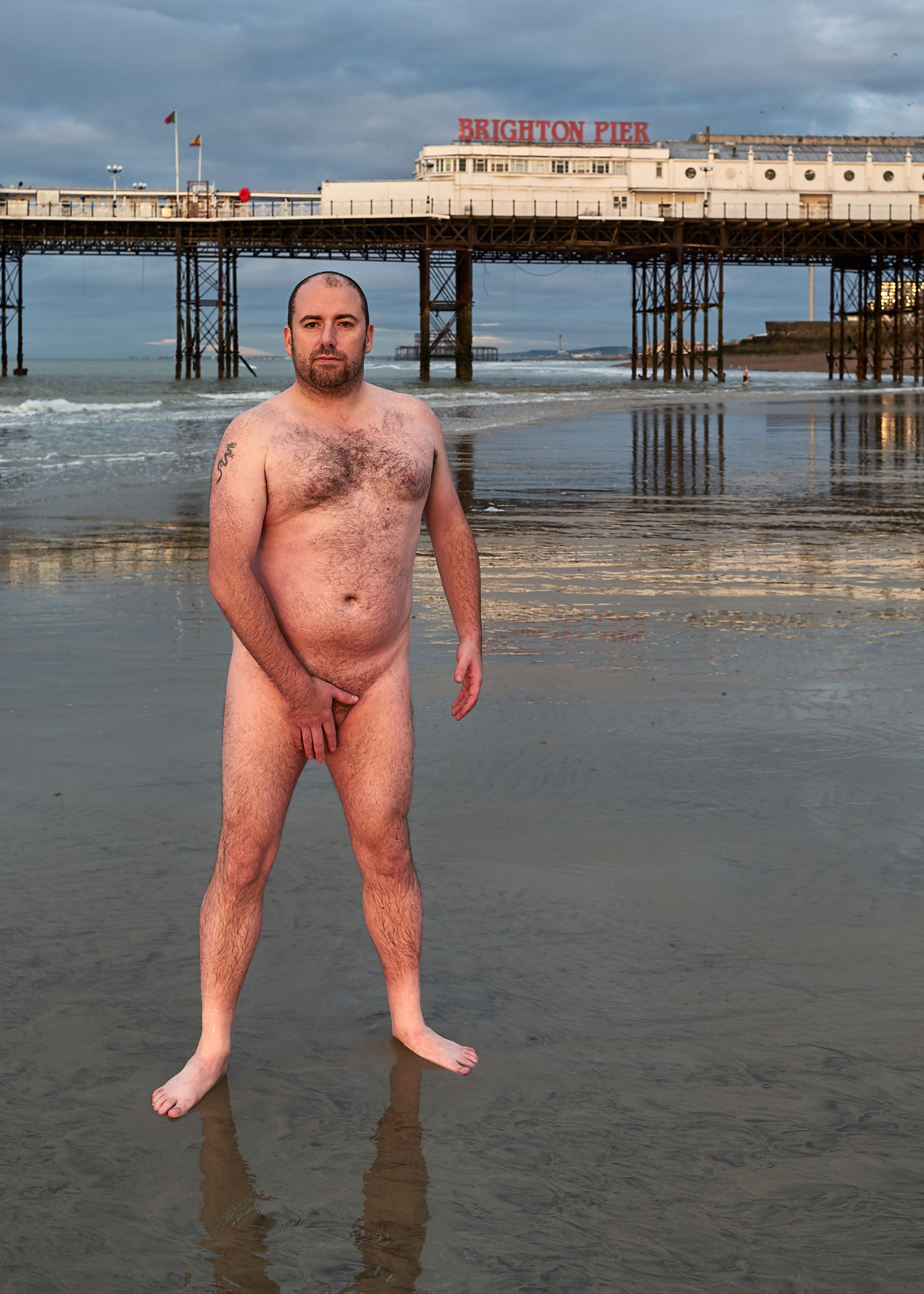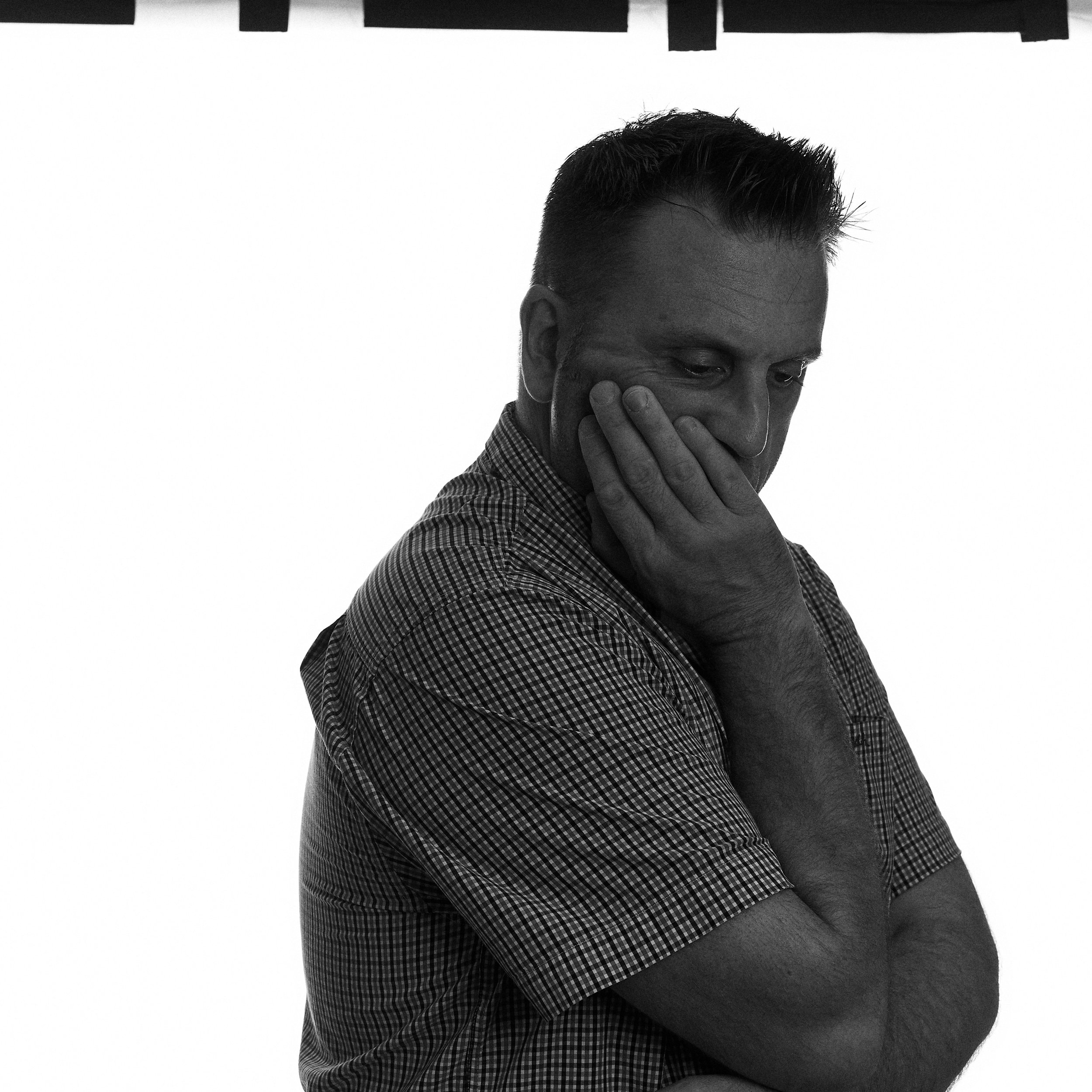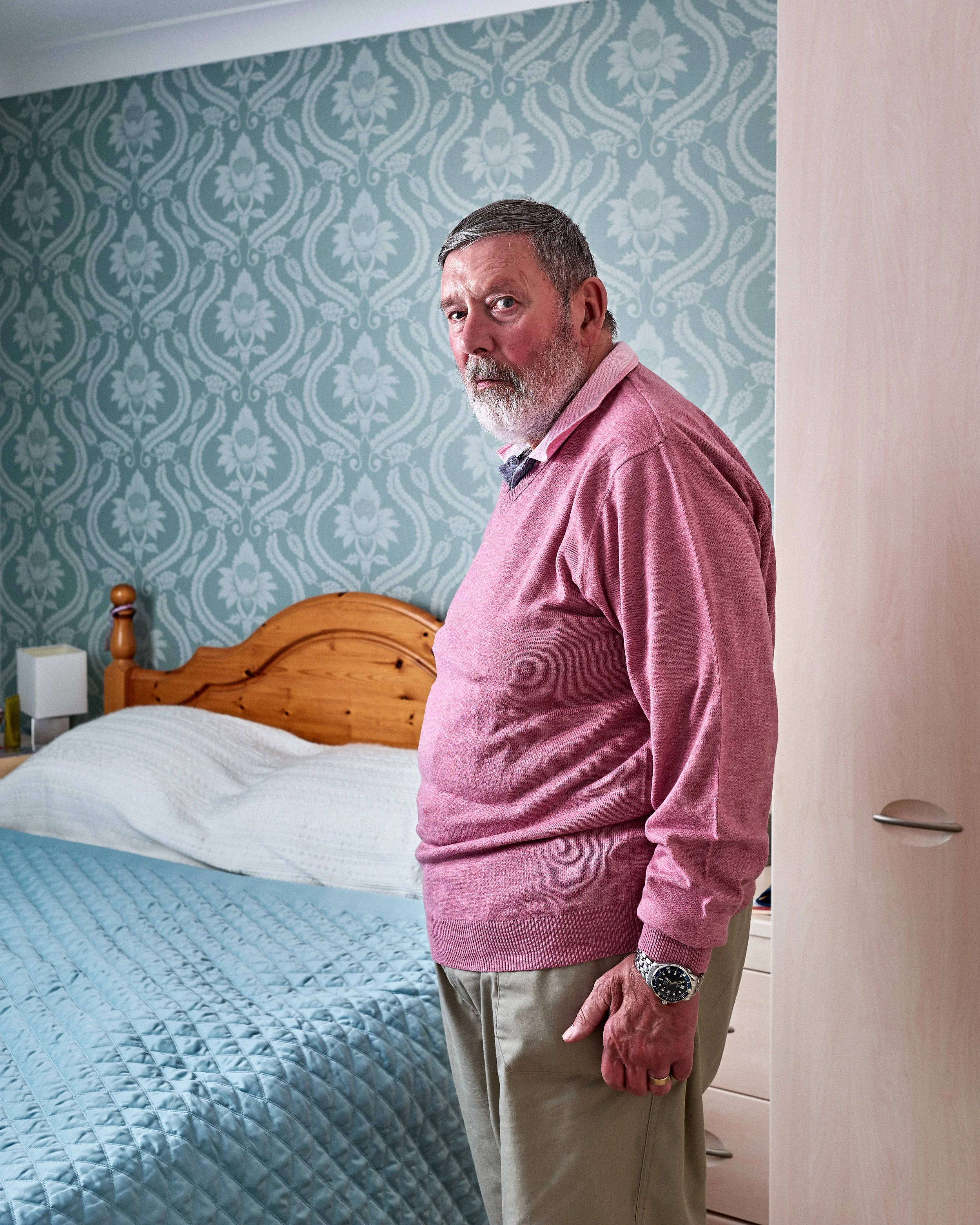Brick Lane is a bit of cliché. Don’t get me wrong it’s a fabulous part of London and very few places get close for nurturing quite the hubbub of creative energy that the makes the place almost literally hum with excitement. But I am an outsider (as are most people there) and so the opportunity for being truly authentic with any picture I make while wandering around the Lane is limited. The risks of falling into cliché are very high so while I like the place, I rarely go there and am circumspect as to the images I make there and certainly of the people I approach.
With Russell, the man in this shot, I felt on relatively safe ground. It was very obvious that he was a guy taking a break from an otherwise (perhaps dull) corporate job to enjoy something more real and valuable about life – walking a dog. Indeed, Russell is a former (and still qualified) Chartered Accountant who now works as a recruitment consultant in the city. Nothing says more profoundly to me that here is a man who prefers to work with 'people rather than things’ and so has switched from accounting to relating. It will be a very different career path and perhaps not one that will so readily lead to a senior management or executive position within a large corporate entity (it might but it’s less likely) but still I think Russell will be happier for it. I hope so.
We make life choices all the time. Where we end up is a lot about what we choose; it’s also about what life will let us choose and sometimes it’s harder to make the decision we want because life pushes in a particular direction. Russell isn’t taking the path through life that ‘men’ typically take. He’s far more agreeable than most men, more polite and less likely to want to offend. His demeanour is softer and more compassionate and I have the sense that he perhaps carries a little more thought and worry about things than most men. He is very like me and I liked him because of that.
I think this is one of my favourite ‘stranger portraits’ for all these reasons; I love the way his dog looks at him expectantly for direction or engagement; his direct look to me is tinged with slight apprehension perhaps the result of my approach perhaps the result of being in a deeply reflective mood taking his lunch break to walk the office dog. I love the lighting, which was very flat and low contrast on this day but just bright enough to bring out the green of the grass land around him, which is itself, a little incongruous to the urban location. And I like the space around him, which heightens the sense of existentialism that I think is the main theme in this image.
I do not want to judge too much but if I ever had the sense that here was a man more desperately in need of becoming a father, of finding his purpose and legacy, it is in this encounter.



















